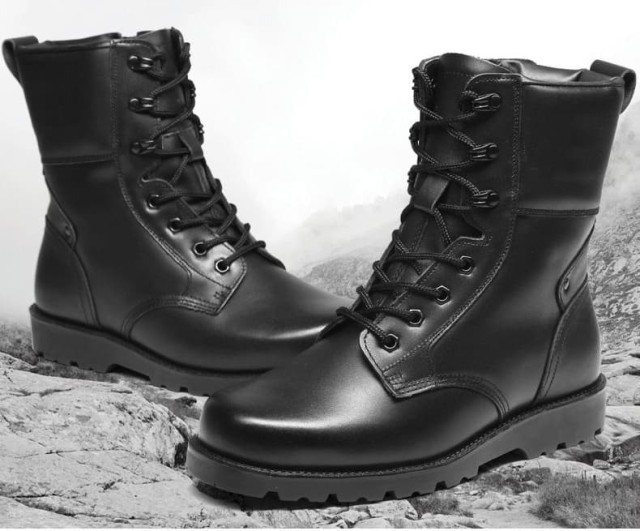For outdoor enthusiasts and professionals facing harsh conditions, footwear construction isn't just about aesthetics—it's about survival. Norwegian welt construction offers unparalleled waterproofing and durability, but its higher cost demands careful consideration. This guide dissects when its advantages outweigh Goodyear welt's versatility, helping buyers align their choice with climate needs and long-term value.
Norwegian and Goodyear Welt Construction Compared
Anatomy of Norwegian Construction’s Waterproof Design
Norwegian welt builds upon Goodyear principles with critical reinforcements:
- Double-stitched barrier: An additional external stitch row seals the upper-to-sole junction, preventing water ingress even during prolonged submersion.
- Raised insole ridge: The welt attaches to a molded ridge on the insole, creating a natural runoff channel for moisture.
- Dense midsole integration: Combined with storm welts (extended leather flaps), this design excels in wet environments like snowfields or rainforest trails.
Research shows Norwegian-welted boots maintain waterproof integrity 2–3 times longer than standard Goodyear welts in extreme precipitation.
Goodyear Welt’s Versatility and Cost Efficiency
Goodyear remains the gold standard for urban and moderate-use footwear due to:
- Easier resoling: A single internal stitch allows cobblers to replace soles without reconstructing the entire shoe.
- Lighter weight: Fewer material layers improve flexibility for daily wear.
- Lower upfront cost: Simplified construction reduces labor by ~30% compared to Norwegian methods.
For office commutes or dry climates, Goodyear delivers sufficient durability without over-engineering.
Key Scenarios Where Norwegian Construction Excels
Performance in Extreme Weather and Outdoor Activities
Norwegian welts dominate in:
- Winter expeditions: The sealed stitching resists saltwater and slush penetration—common failure points for Goodyear boots.
- Mountain trekking: Reinforced midsoles stabilize feet on uneven terrain while preventing sole separation under heavy loads.
- Wet workplaces: Fishermen, loggers, and farmers benefit from the design’s resilience to constant moisture.
A field study of Arctic researchers found Norwegian-welted boots required 40% fewer replacements over five years than Goodyear alternatives.
Long-Term Durability vs. Repair Limitations
Trade-offs to consider:
- Extended lifespan: Properly maintained Norwegian boots often last 8–10 years, outperforming Goodyear’s 5–7 year average.
- Specialized repairs: While resoling is possible, full reconstruction demands expert cobblers familiar with the technique.
For buyers prioritizing "buy it for life" footwear over easy maintenance, Norwegian construction justifies its premium.
Practical Considerations for Buyers
Cost-Benefit Analysis for Different Use Cases
| Factor | Norwegian Welt | Goodyear Welt |
|---|---|---|
| Ideal Climate | Heavy rain/snow | Moderate/dry |
| Activity Intensity | High (hiking, work) | Moderate (urban) |
| Cost (Relative) | $$$ | $$ |
| Resole Cost | Higher | Lower |
Budget tip: Invest in Norwegian welts if you face 100+ days of precipitation annually or rigorous outdoor use.
Identifying Authentic Norwegian Craftsmanship
Spot quality markers:
- Visible double stitching around the welt with uniform tension.
- Storm welts extending 2–3mm beyond the upper.
- Full-grain leather uppers—cheaper models compromise waterproofing with corrected grain.
Step Into Unmatched Protection with 3515 Footwear
Whether you're equipping a wilderness guide team or sourcing durable work boots, 3515’s Norwegian-welted collection merges heritage craftsmanship with modern performance. Our bulk manufacturing expertise ensures consistent quality across large orders—because when the elements test your limits, your footwear shouldn’t be the weak link.
Explore our range today: Let’s build footwear that withstands decades, not seasons.
Related Products
- Durable Military Combat Boots with Water Drainage for Wholesale & OEM
- Safety Footwear Wholesale Manufacturer for Custom OEM/ODM Production
- Athletic Safety Shoes with Dial Closure & Steel Toe for Wholesale & Custom Manufacturing
- Wholesale Anti-Smash & Puncture-Proof Safety Shoes Custom Manufacturing for Brands
- Wholesale Customizable Suede Safety Boots - Puncture-Proof with Velcro Closure
Related Articles
- How Tactical Boots Solve Critical Challenges in Law Enforcement Operations
- How Tactical Boots Deliver Long-Term Value: A Cost & Performance Breakdown
- How Tactical Boots Achieve All-Day Comfort: Science-Backed Design Secrets
- How to Choose Tactical Boots That Match Your Law Enforcement Needs
- How Tactical Boots Solve Everyday Challenges: From City Streets to Job Sites



















